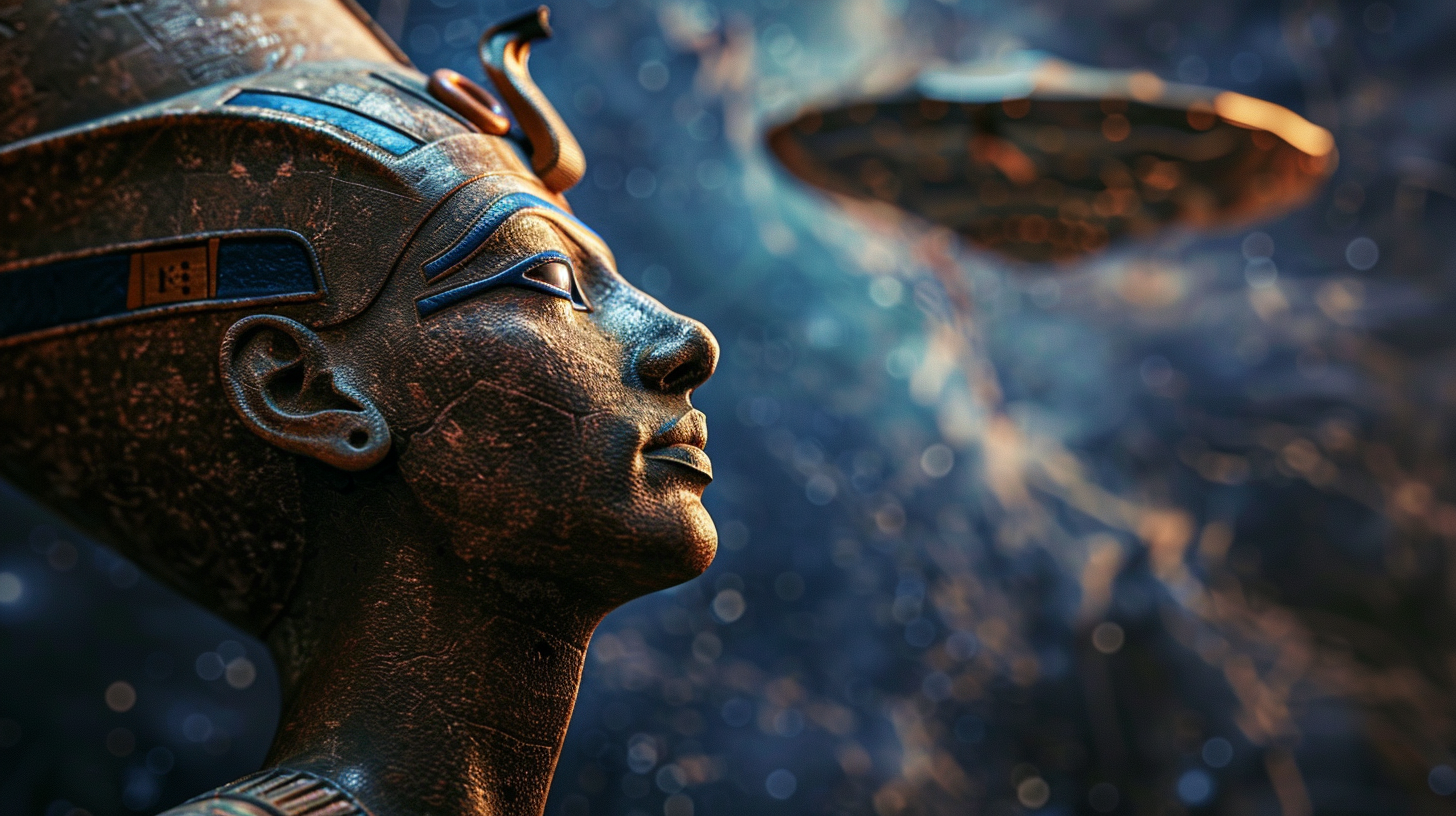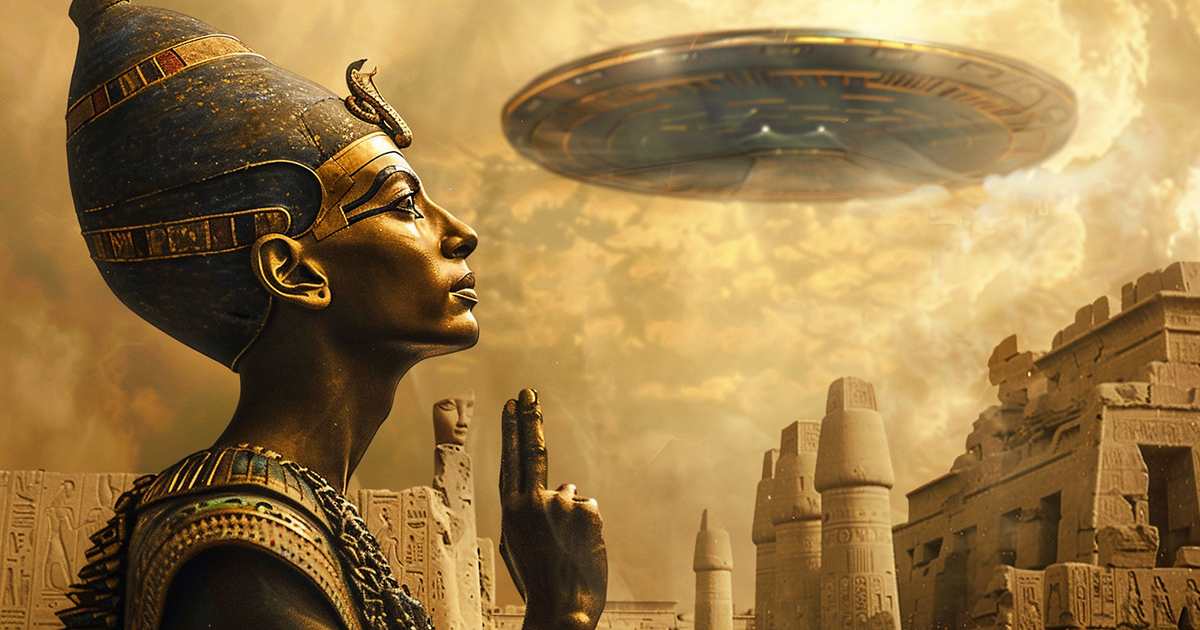Pharaoh Akhenaten, one of ancient Egypt’s most enigmatic rulers, is renowned for his radical religious reforms and the introduction of Atenism, the worship of the sun disk Aten, as the sole deity. Among the many mysteries surrounding Akhenaten’s reign is the depiction of the Aten as a disk-like object resembling a spacecraft, sparking speculation about possible extraterrestrial influence. Let’s delve into the history and symbolism of Atenism and explore the various interpretations of this intriguing aspect of ancient Egyptian religion.
Akhenaten’s reign, which lasted from approximately 1353 to 1336 BCE, marked a significant departure from traditional Egyptian religious beliefs and practices. He sought to elevate the Aten, previously considered a minor aspect of the sun god Ra, to the status of the supreme deity, while diminishing the influence of other gods and goddesses. This radical monotheistic ideology was reflected in the construction of a new capital city, Akhetaten (modern-day Amarna), dedicated to the worship of the Aten.
Central to Atenism was the depiction of the Aten as a disk-like object with rays extending downward, often ending in hands holding ankh symbols, the symbol of life. Some interpretations of the Aten’s depiction suggest that it may resemble a spacecraft or UFO, leading to speculation about possible extraterrestrial influence on ancient Egyptian religion. However, it is essential to approach such interpretations with caution and consider alternative explanations rooted in ancient Egyptian cosmology and symbolism.

One interpretation of the Aten’s depiction as a disk-like object is rooted in the symbolism of the sun and its life-giving properties. The sun was revered as a source of light, warmth, and fertility in ancient Egyptian religion, and its worship was central to the daily lives of the Egyptian people. Therefore, the representation of the Aten as a radiant disk may have been a symbolic expression of these attributes, rather than a literal depiction of a spacecraft.
Moreover, the hands extending from the Aten’s rays, often depicted holding ankh symbols, may symbolize the sun’s role in sustaining life and ensuring the continuity of existence. The ankh symbol, with its looped top resembling a handle, was associated with concepts of life, immortality, and regeneration in ancient Egyptian religion. Therefore, the depiction of the Aten with outstretched hands holding ankh symbols may have conveyed the idea of the sun as a benevolent deity bestowing life and vitality upon the world.
Another interpretation of the Aten’s depiction as a disk-like object is rooted in Akhenaten’s personal religious beliefs and political motivations. Some scholars argue that Akhenaten’s promotion of Atenism was driven by a desire to consolidate his own power and undermine the authority of the priesthood of Amun, who held considerable influence in traditional Egyptian religion. Therefore, the emphasis on the Aten as the sole deity may have been a deliberate attempt to centralize religious authority under the pharaoh’s control.
In conclusion, while the depiction of the Aten as a disk-like object resembling a spacecraft may fuel speculation about possible extraterrestrial influence on ancient Egyptian religion, it is essential to consider alternative interpretations rooted in ancient Egyptian cosmology, symbolism, and historical context. Whether viewed as a symbolic representation of the sun’s life-giving properties or as a manifestation of Akhenaten’s political and religious agenda, the worship of the Aten remains a fascinating chapter in the history of ancient Egypt.

20 thoughts on “Deciphering Pharaoh Akhenaten’s Worship of the Aten: Ancient Egyptian Beliefs and Possible Interpretations”
Comments are closed.